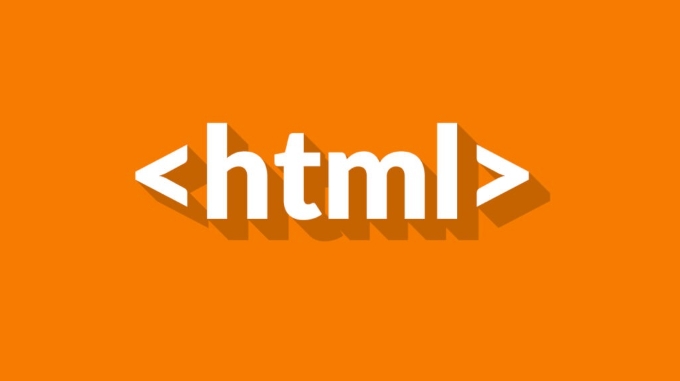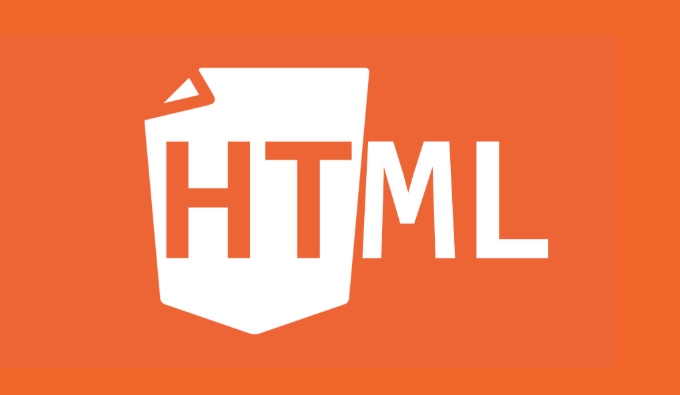To make the link open in a new tab, the most direct way is to use the target="_blank" attribute of HTML. It is also recommended to use rel="noopener" to improve security. Dynamic control can also be achieved through the window.open() method of JavaScript. The specific methods are as follows: 1. Add target="_blank" to the tag to make the link open in the new tab; 2. Add rel="noopener" to prevent the new page from accessing the window.opener of the original page to avoid security risks; 3. Use the window.open() method to implement script control, which is suitable for scenarios that require dynamic judgment, but pay attention to browser interception issues. These methods can meet the needs of different situations.

Sometimes you want the page to open in the new tab page when the user clicks on a link, rather than jumping in the current page. At this time, you need to make the link support the behavior of "opening in a new tab".

Implementing this function is actually very simple, you only need to use one attribute of HTML to handle it.

Use target="_blank" attribute
This is the most common and direct way. Add target="_blank" to the <a></a> tag to make the link open in the new tab.
<a href="https://example.com" target="_blank">Open a new tab</a>
After writing this way, the user will load the landing page in the new browser tab when clicking on the link without leaving the current page.

However, one thing to note: if there are many such links on the page, or if you want to manage these behaviors in a unified manner, it is recommended to handle them in conjunction with JavaScript or CSS classes to avoid manually adding attributes one by one and make mistakes easily.
It is safer to cooperate with rel="noopener"
Although target="_blank" can complete the task, there is a potential security problem: the newly opened page can access the original page object through window.opener . This means it has the potential to control or tamper with the original page's behavior.
To avoid this, it is recommended to add rel="noopener" at the same time:
<a href="https://example.com" target="_blank" rel="noopener">Safely open new tab page</a>
This can prevent the new page from accessing window.opener of the original page and improve security.
If you are a platform like a public website, blog or forum that allows users to insert external links, this attribute is particularly important and can effectively prevent some malicious script attacks.
Control the opening method through JavaScript
Sometimes, links are not written directly in HTML, but are dynamically generated by JavaScript. In this case, you can also use scripts to control the opening method.
For example, you can use window.open() method:
window.open("https://example.com", "_blank");This method is more flexible and suitable for scenarios where you need to judge whether to open a new tab page based on conditions.
But it should be noted that many browsers will intercept popups sent directly by non-users (such as not executing them in click events), so when using them, make sure that it responds to user actions, such as clicking buttons or links.
Basically these are the methods. It is the most common practice to use target="_blank" and add rel="noopener" to be more secure; if dynamic control is required, you can use JavaScript's window.open() . These methods can basically meet the needs of various scenarios.
The above is the detailed content of How to open a link in a new tab from an HTML page?. For more information, please follow other related articles on the PHP Chinese website!

Hot AI Tools

Undress AI Tool
Undress images for free

Undresser.AI Undress
AI-powered app for creating realistic nude photos

AI Clothes Remover
Online AI tool for removing clothes from photos.

Clothoff.io
AI clothes remover

Video Face Swap
Swap faces in any video effortlessly with our completely free AI face swap tool!

Hot Article

Hot Tools

Notepad++7.3.1
Easy-to-use and free code editor

SublimeText3 Chinese version
Chinese version, very easy to use

Zend Studio 13.0.1
Powerful PHP integrated development environment

Dreamweaver CS6
Visual web development tools

SublimeText3 Mac version
God-level code editing software (SublimeText3)

Hot Topics
 Explain the purpose of the role attribute in ARIA.
Jun 14, 2025 am 12:35 AM
Explain the purpose of the role attribute in ARIA.
Jun 14, 2025 am 12:35 AM
ARIA's role attribute is used to define the role of web elements and improve accessibility. 1. Role attribute helps assistive technology to understand the functions of elements, such as buttons, navigation, etc. 2. Use role attributes to assign specific roles to non-semantic HTML elements. 3. The role attribute should be consistent with the element behavior and be verified by the accessibility tool test.
 HTML and Design: Creating the Visual Layout of Websites
Jun 14, 2025 am 12:39 AM
HTML and Design: Creating the Visual Layout of Websites
Jun 14, 2025 am 12:39 AM
How to create a website layout? 1. Use HTML tags to define the content structure, such as, ,. 2. Control styles and positions through CSS, using box model, float or Flexbox layout. 3. Optimize performance, reduce HTTP requests, use cache and optimize images, and ensure responsive design.
 How can you ensure your HTML code is readable and maintainable?
Jun 10, 2025 am 12:06 AM
How can you ensure your HTML code is readable and maintainable?
Jun 10, 2025 am 12:06 AM
Improve the readability and maintainability of HTML code can be achieved through the following steps: 1. Use semantic tags, such as, etc. to make the code structure clear and improve SEO effect; 2. Keep the code formatted and use consistent indentation and spaces; 3. Add appropriate comments to explain the code intention; 4. Avoid excessive nesting and simplify the structure; 5. Use external style sheets and scripts to keep the HTML concise.
 How do I stay up-to-date with the latest HTML standards and best practices?
Jun 20, 2025 am 08:33 AM
How do I stay up-to-date with the latest HTML standards and best practices?
Jun 20, 2025 am 08:33 AM
The key to keep up with HTML standards and best practices is to do it intentionally rather than follow it blindly. First, follow the summary or update logs of official sources such as WHATWG and W3C, understand new tags (such as) and attributes, and use them as references to solve difficult problems; second, subscribe to trusted web development newsletters and blogs, spend 10-15 minutes a week to browse updates, focus on actual use cases rather than just collecting articles; second, use developer tools and linters such as HTMLHint to optimize the code structure through instant feedback; finally, interact with the developer community, share experiences and learn other people's practical skills, so as to continuously improve HTML skills.
 How do I use the element to represent the main content of a document?
Jun 19, 2025 pm 11:09 PM
How do I use the element to represent the main content of a document?
Jun 19, 2025 pm 11:09 PM
The reason for using tags is to improve the semantic structure and accessibility of web pages, make it easier for screen readers and search engines to understand page content, and allow users to quickly jump to core content. Here are the key points: 1. Each page should contain only one element; 2. It should not include content that is repeated across pages (such as sidebars or footers); 3. It can be used in conjunction with ARIA properties to enhance accessibility. Usually located after and before, it is used to wrap unique page content, such as articles, forms or product details, and should be avoided in, or in; to improve accessibility, aria-labeledby or aria-label can be used to clearly identify parts.
 How do I create a basic HTML document?
Jun 19, 2025 pm 11:01 PM
How do I create a basic HTML document?
Jun 19, 2025 pm 11:01 PM
To create a basic HTML document, you first need to understand its basic structure and write code in a standard format. 1. Use the declaration document type at the beginning; 2. Use the tag to wrap the entire content; 3. Include and two main parts in it, which are used to store metadata such as titles, style sheet links, etc., and include user-visible content such as titles, paragraphs, pictures and links; 4. Save the file in .html format and open the viewing effect in the browser; 5. Then you can gradually add more elements to enrich the page content. Follow these steps to quickly build a basic web page.
 What is an HTML tag?
Jun 13, 2025 am 12:36 AM
What is an HTML tag?
Jun 13, 2025 am 12:36 AM
HTMLtagsareessentialforstructuringwebpages.Theydefinecontentandlayoutusinganglebrackets,ofteninpairslikeand,withsomebeingself-closinglike.HTMLtagsarecrucialforcreatingstructured,accessible,andSEO-friendlywebpages.
 How do I create checkboxes in HTML using the element?
Jun 19, 2025 pm 11:41 PM
How do I create checkboxes in HTML using the element?
Jun 19, 2025 pm 11:41 PM
To create an HTML checkbox, use the type attribute to set the element of the checkbox. 1. The basic structure includes id, name and label tags to ensure that clicking text can switch options; 2. Multiple related check boxes should use the same name but different values, and wrap them with fieldset to improve accessibility; 3. Hide native controls when customizing styles and use CSS to design alternative elements while maintaining the complete functions; 4. Ensure availability, pair labels, support keyboard navigation, and avoid relying on only visual prompts. The above steps can help developers correctly implement checkbox components that have both functional and aesthetics.






